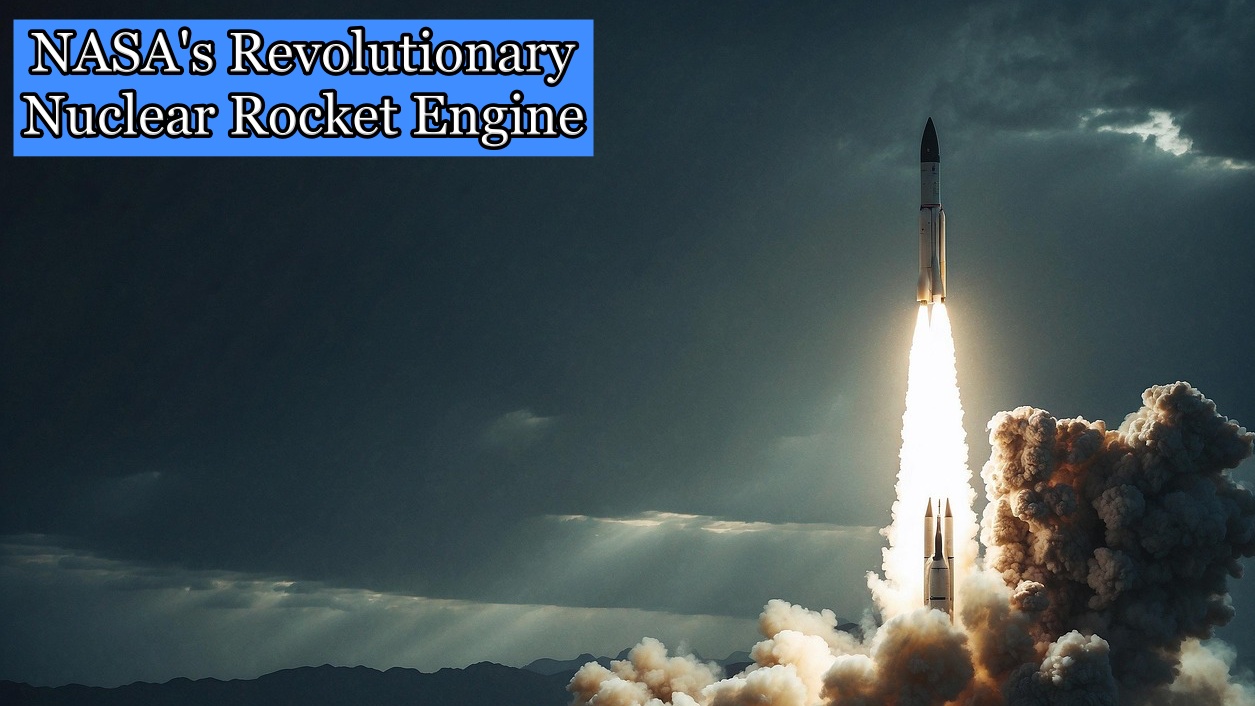As we set our sights on the Red Planet, Mars has become humanity’s next great frontier. The journey to Mars is a monumental challenge, and companies like SpaceX and organizations like NASA are actively exploring the best ways to make this dream a reality.
In this blog post, we will dive deep into the latest advancements in space travel technology and explore how the race to Mars is shaping up with Starship and nuclear propulsion.
SpaceX’s Starship: The Fastest Journey to Mars Yet
Elon Musk’s SpaceX has outlined a six-month journey to Mars using its cutting-edge spacecraft, Starship. While this remains the fastest possible travel time with current technology, even six months feels like an eternity when we’re talking about the vast distances of space. But could nuclear propulsion change all of that? Let’s take a closer look.
NASA’s Nuclear Rocket: A Revolutionary Solution
For decades, nuclear power has been regarded as a promising energy source due to its immense potential compared to traditional energy sources. NASA is now bringing forward a game-changing solution: the nuclear rocket. This breakthrough technology promises to dramatically shorten travel time to Mars, potentially offering speeds far beyond what Starship alone can achieve.
However, while nuclear propulsion offers significant promise, it also comes with challenges and risks that must be overcome. So, what exactly is NASA developing to make this dream a reality?

Nuclear Propulsion: The Future of Space Travel?
Nuclear propulsion systems operate on a basic principle: nuclear fission. When a neutron collides with uranium, it causes uranium atoms to split into smaller fragments, releasing an enormous amount of energy in the process. This energy is harnessed to generate thrust.
Compared to chemical propulsion, nuclear propulsion offers:
- Higher efficiency and power
- The ability to achieve much higher speeds
- A superior thrust capability
With these advantages, nuclear rockets can significantly reduce travel time to Mars, potentially cutting it by half.
NASA’s Steps Toward Nuclear Propulsion
NASA has already begun making strides in nuclear-powered spaceflight. One of the most exciting developments is the Draco project, a collaboration with DARPA. This nuclear thermal propulsion system will utilize a fuel source called highly enriched uranium (Halu), which is considered both safer and more suitable for space applications than traditional uranium.
This innovative propulsion system can heat a propellant, such as hydrogen or ammonia, to over 5,000°F (2,700°C). The heated gases then expand and create pressure, which is expelled through a nozzle to produce thrust.
Thanks to Draco’s technology, NASA expects to reduce the travel time to Mars to just 45 days, a stunning improvement over the six-month journey proposed by SpaceX’s Starship.
NASA’s Nuclear Thermal Test: A Step Closer to Reality
In another exciting development, NASA has successfully conducted the first test of a nuclear thermal propulsion system with General Atomics. The test evaluated the fuel‘s ability to withstand the extreme conditions of space, with the reactor reaching temperatures over 4,200°F (2,300°C).
These tests have yielded promising results, demonstrating that the fuel can survive high temperatures and could be a viable solution for space travel. With plans to demonstrate the system in 2027, NASA is on track to send astronauts to Mars in the early 2030s.
Other Advancements: Pulsed Plasma Rockets
NASA isn’t stopping with nuclear thermal propulsion. They are also exploring another potential nuclear propulsion system: the pulsed plasma rocket (PPR). This system uses nuclear explosions to heat uranium atoms and convert them into plasma. The system then uses coil gun thrusters and magnetic nozzles to accelerate and direct the plasma, offering high thrust and high specific impulse.
Though still in the early research phase, this technology could provide extremely efficient and precise thrust for future missions to Mars and beyond.
The Challenges Ahead: Safety and Feasibility
While nuclear propulsion offers significant potential, it also comes with its own set of challenges, primarily around safety. The production, handling, and operation of nuclear propulsion systems need to be stringently regulated to ensure astronaut safety. If something goes wrong, the consequences could be severe.
For example, the Mars Sample Return program has experienced significant delays and budget overruns. If nuclear propulsion faces similar challenges, its timeline could stretch out much longer than anticipated.
Will Nuclear Propulsion Replace Starship?
As much as nuclear-powered rockets promise to cut down travel times, they are unlikely to replace SpaceX’s Starship in the near future. Here’s why:
- Schedule: Nuclear rocket technology is still in the research phase, with no planned launches before 2027 and human missions to Mars likely not occurring before 2030. SpaceX, on the other hand, is aiming to send an uncrewed mission to Mars as soon as late 2026 and a crewed mission by late 2028.
- Launch Frequency: SpaceX plans to launch up to 10 Starship missions per day, with a payload capacity of over 200 tons per launch. This means SpaceX could deliver millions of tons of cargo to Low Earth Orbit in a single Mars transfer window. This frequency would far outpace any nuclear rocket’s ability to transport cargo.
- Fuel Efficiency: Starship uses methane and liquid oxygen, both of which can be produced on Mars using CO2 from the atmosphere and water from ice deposits. This capability makes long-term Mars colonization more sustainable, eliminating the need to transport fuel from Earth.
Nuclear Rockets and Starship: Complementary Technologies
Rather than competing, Starship and nuclear rockets could complement each other. While Starship could lay the groundwork for Mars colonization through high-frequency cargo transport, nuclear-powered rockets could later be used for rapid crew transport and high-speed cargo deliveries. Both technologies working together could make the dream of becoming a multiplanetary species a reality sooner than expected.
Conclusion: A Bright Future for Space Exploration
As we stand on the brink of a new era in space exploration, the question remains: Is nuclear propulsion the future of space travel? While challenges remain, both NASA and SpaceX are making great strides in ensuring that we will one day reach Mars and beyond. Whether through nuclear propulsion or Starship, humanity’s journey to the stars is becoming more tangible with every passing day.
FAQ
The fastest way to reach Mars with current technology is using SpaceX’s Starship, which promises a six-month journey. However, nuclear propulsion systems being developed by NASA could dramatically shorten this travel time.
Nuclear propulsion works by harnessing the energy released during nuclear fission reactions to generate thrust. This technology provides higher efficiency and more power than traditional chemical rockets, allowing for faster space travel.
Nuclear propulsion systems, such as nuclear thermal engines, can achieve much higher speeds compared to chemical rockets, potentially cutting the journey to Mars in half, from six months to just 45 days.
The Draco project is a collaboration between NASA and DARPA focused on developing nuclear thermal propulsion. This project aims to demonstrate the use of highly enriched uranium as a safer fuel and significantly reduce travel time to Mars.
NASA plans to conduct the first test flight of the Draco nuclear thermal engine in 2027, with ambitions to send crewed missions to Mars in the early 2030s.
Safety concerns revolve around the handling, production, and operation of nuclear materials. Ensuring the safe transport and operation of nuclear propulsion systems is crucial, as failure could have severe consequences for astronauts and the spacecraft.
No, these technologies are expected to complement each other. While Starship will handle high-frequency cargo transport and Mars colonization infrastructure, nuclear propulsion will facilitate rapid crew transport and high-speed deliveries.
Starship uses methane and liquid oxygen as fuel, which can be produced on Mars using local resources like CO2 from the atmosphere and water from ice deposits, ensuring long-term sustainability.
Nuclear propulsion systems can achieve a higher specific impulse, meaning they convert fuel into thrust more efficiently. This results in rockets that are twice as powerful as traditional chemical rockets, enabling faster space travel.
The long-term goal of nuclear propulsion is to make deep space missions feasible by drastically reducing travel times, which would alleviate challenges such as the need for extensive life support systems and provide safer, faster travel to destinations like Mars and beyond.
Read More:


1 thought on “NASA’s Revolutionary Nuclear Rocket Engine: Faster & More Efficient Journey to Mars than Starship”